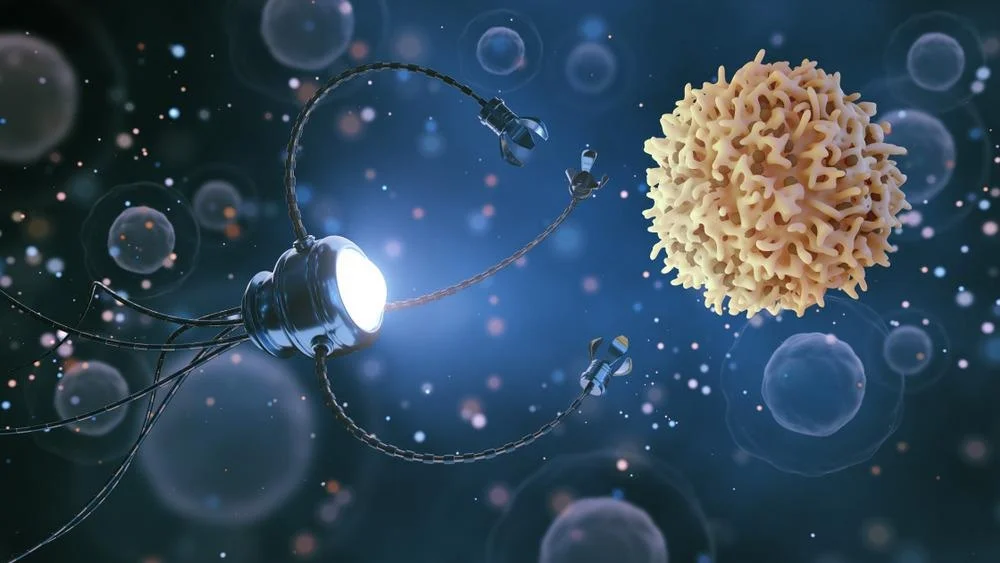Parnian Esmaeilishayeh (12) | STAFF REPORTER
Many are unaware of the capabilities of nanotechnology. Nanotechnology is “the study and manipulation of matter at the atomic and molecular level—specifically, matter that’s 1 to 100 nanometres in size” (Government of Canada). Nanotechnology was invented in 1959 by Richard Feynman; he described it as having the ability to “arrange atoms one by one, just as we want them” (“Richard Feynman: There’s plenty of room at the bottom’, Nanotechnology lecture – 1959 — Speakola”). The potential of nanotechnology is leading to revolutionary breakthroughs in many fields, one of which is global warming. Nanotechnology can remove greenhouse emissions and decrease dependence on fossil fuels, though there are doubts regarding its effectiveness due to its high costs, health risks, and environmental concerns.
Nanotechnology requires costly resources, especially gold nanoparticles. One milligram of gold nanoparticles costs around $80, meaning one gram can cost $80,000 (Perkins). This is very expensive and unsustainable. Additionally, the research required to further develop and use such technologies is also very costly. Due to the expensive input required for nanotechnology, a cheaper alternative would be more suitable for long-term use.
Using nanotechnology to reduce global warming would be useless if it harmed the human population. Inhaling nanoparticles can potentially lead to lung damage. Upon contact, it can lead to skin irritations, and once inside the cells, it may interfere with normal cellular functions, causing oxidative damage and even cell death. These harms would make the impact of nanotechnology useless, as it would be doing more harm than good.
Since nanotechnology has only been developed recently and has existed for less than 100 years, there is not enough information regarding its long-term effects on the environment. To list some possible impacts, nanomaterials can contaminate soil and water, lead to pollution, and damage plants. If nanoparticles lead to more environmental harm, it disqualifies all of the positive impact it would make by reducing global warming, making it pointless.
You may be thinking, “If nanotechnology is so uneffective, then why is it so highly regarded?” Nanotechnology has incredible abilities and ample potential, though current information and developments could lead to more harm than good. Upon further research and development ensuring its safety, it can provide one of the most effective solutions to global warming. However, without these developments, using nanotechnology would be pointless, as it would harm more habitants than those that would be saved in the process of reducing global warming.
Nanotechnology still offers a lot of benefits. However, modifications and advancements must be made to ensure it is done safely. These changes can include finding alternative resources that are more affordable, ensuring that they are done in safe locations where the materials do not come into contact with the environment, and ensuring that safety procedures are taken to allow workers to work safely with the nanoparticles. Upon developing methods and technology to ensure these factors are taken into consideration, nanoparticles can revolutionize how we combat global warming.
Works Cited
The History of Nanoscience and Nanotechnology: From Chemical–Physical Applications to Nanomedicine, https://pmc.ncbi.nlm.nih.gov/articles/PMC6982820/. Accessed 13 May 2025.
Nanotechnologies: 6. What are potential harmful effects of nanoparticles?, https://ec.europa.eu/health/scientific_committees/opinions_layman/en/nanotechnologies/l-2/6-health-effects-nanoparticles.htm. Accessed 13 May 2025.
Chausali, Neha, et al. “Nanotechnology as a sustainable approach for combating the environmental effects of climate change.” ScienceDirect, 14 January 2023, https://www.sciencedirect.com/science/article/pii/S2666154323000480. Accessed 13 May 2025.
“Fossil fuels and climate change: the facts.” ClientEarth, https://www.clientearth.org/latest/news/fossil-fuels-and-climate-change-the-facts/. Accessed 13 May 2025.
Government of Canada. “Nanotechnology.” Government of Canada, 10 January 2025, Nanotechnology. Accessed 13 May 2025.
“Richard Feynman: There’s plenty of room at the bottom’, Nanotechnology lecture – 1959 — Speakola.” Speakola, 2 March 2016, https://speakola.com/ideas/richard-feynman-nanotechnology-lecture-1959. Accessed 13 May 2025.



